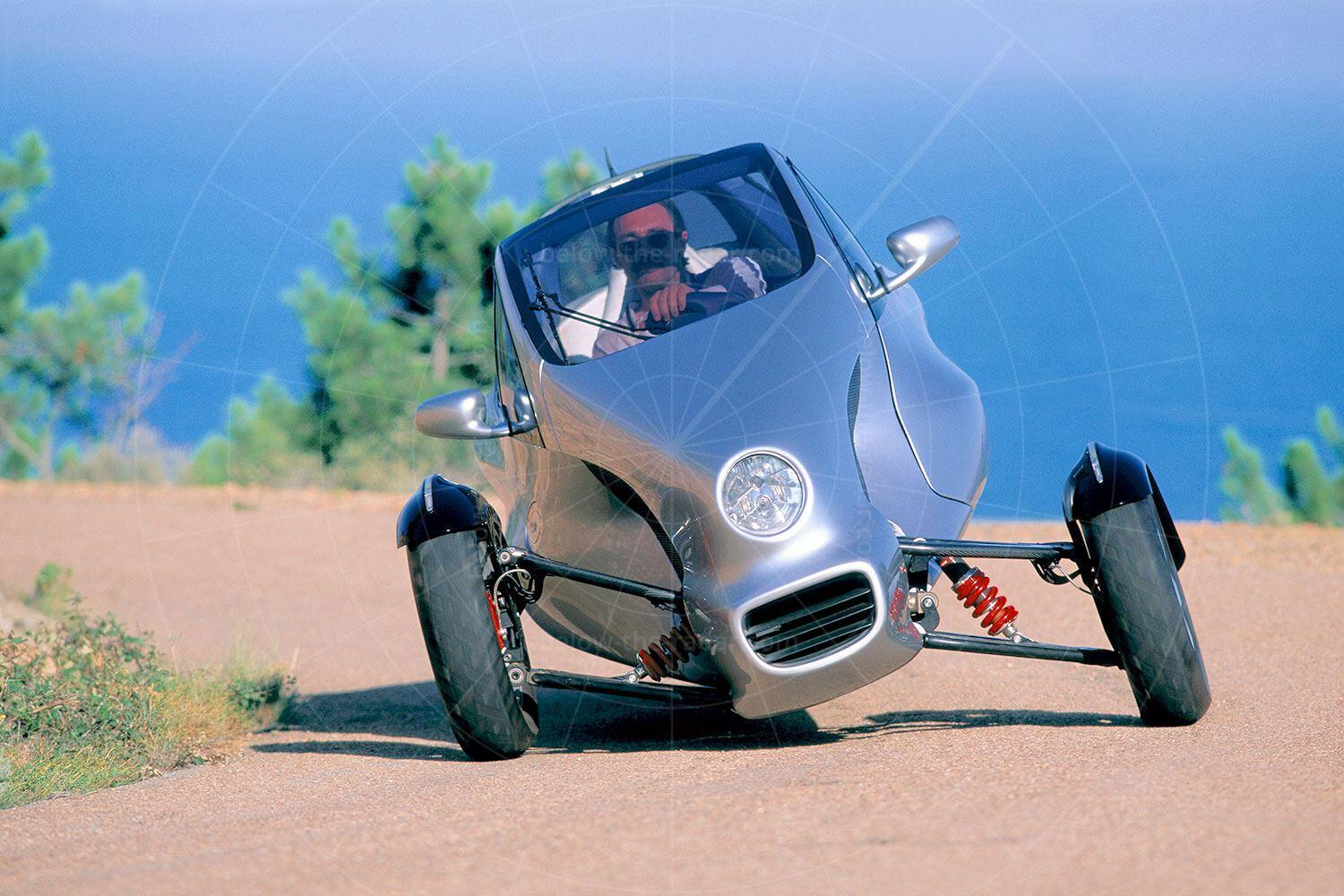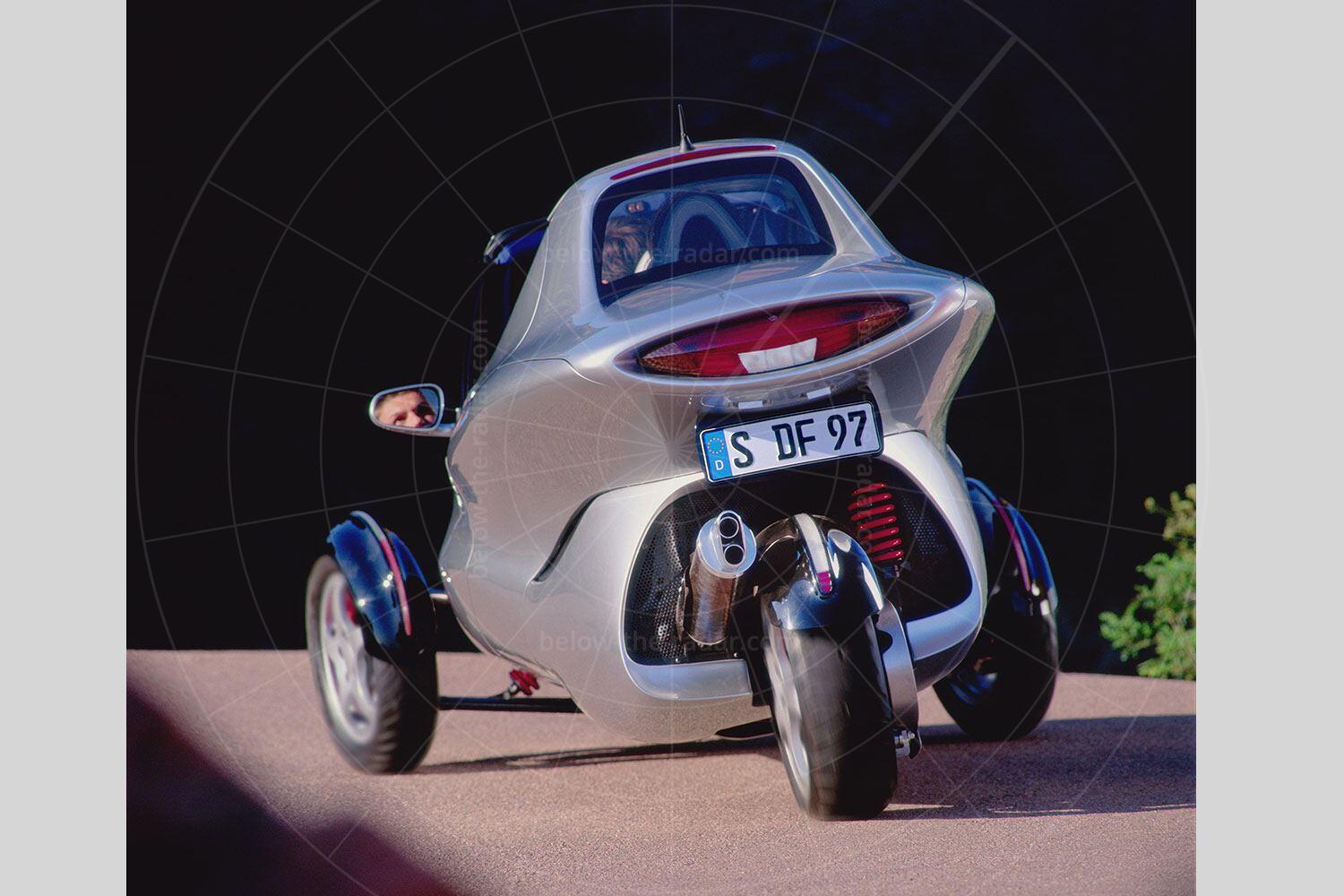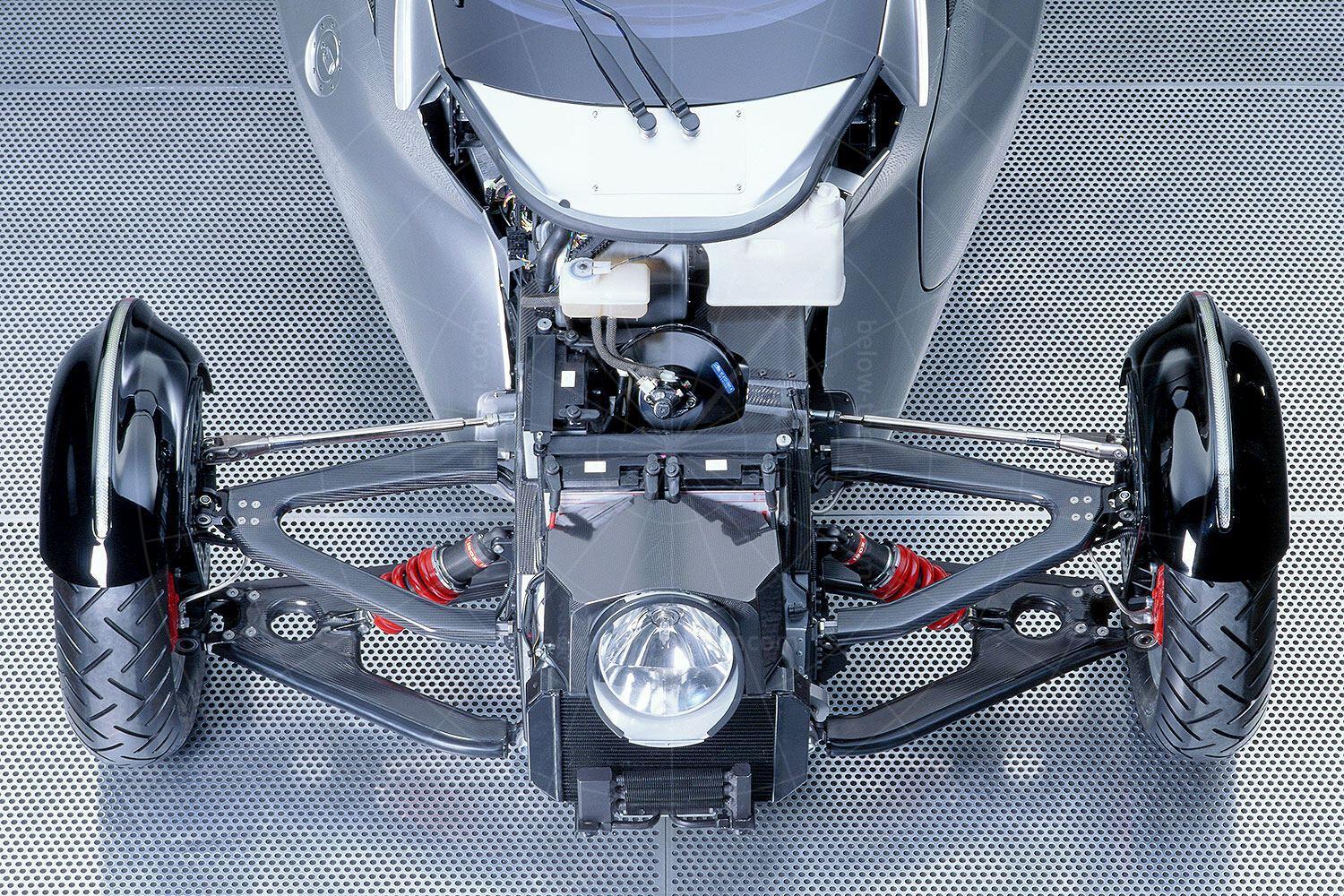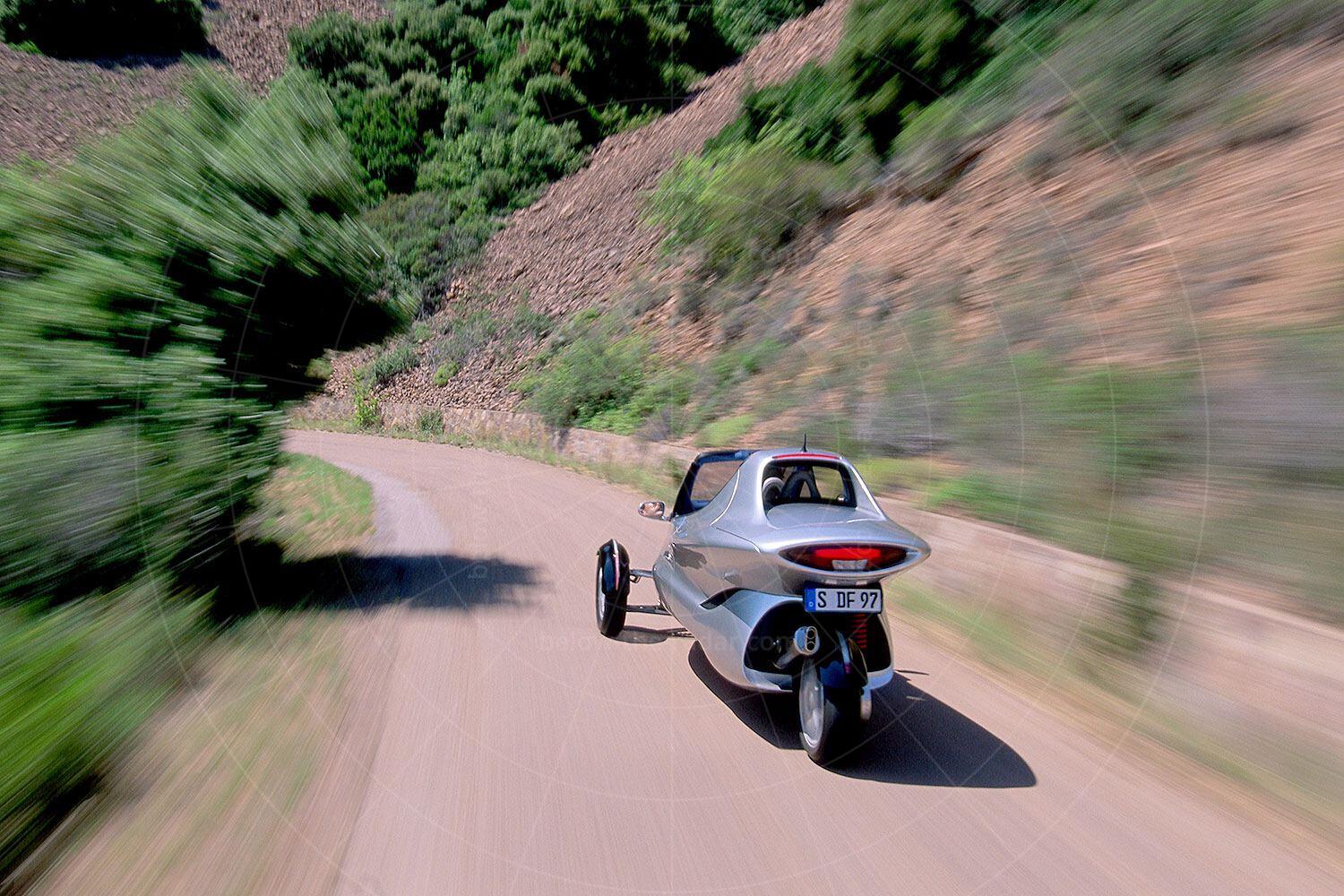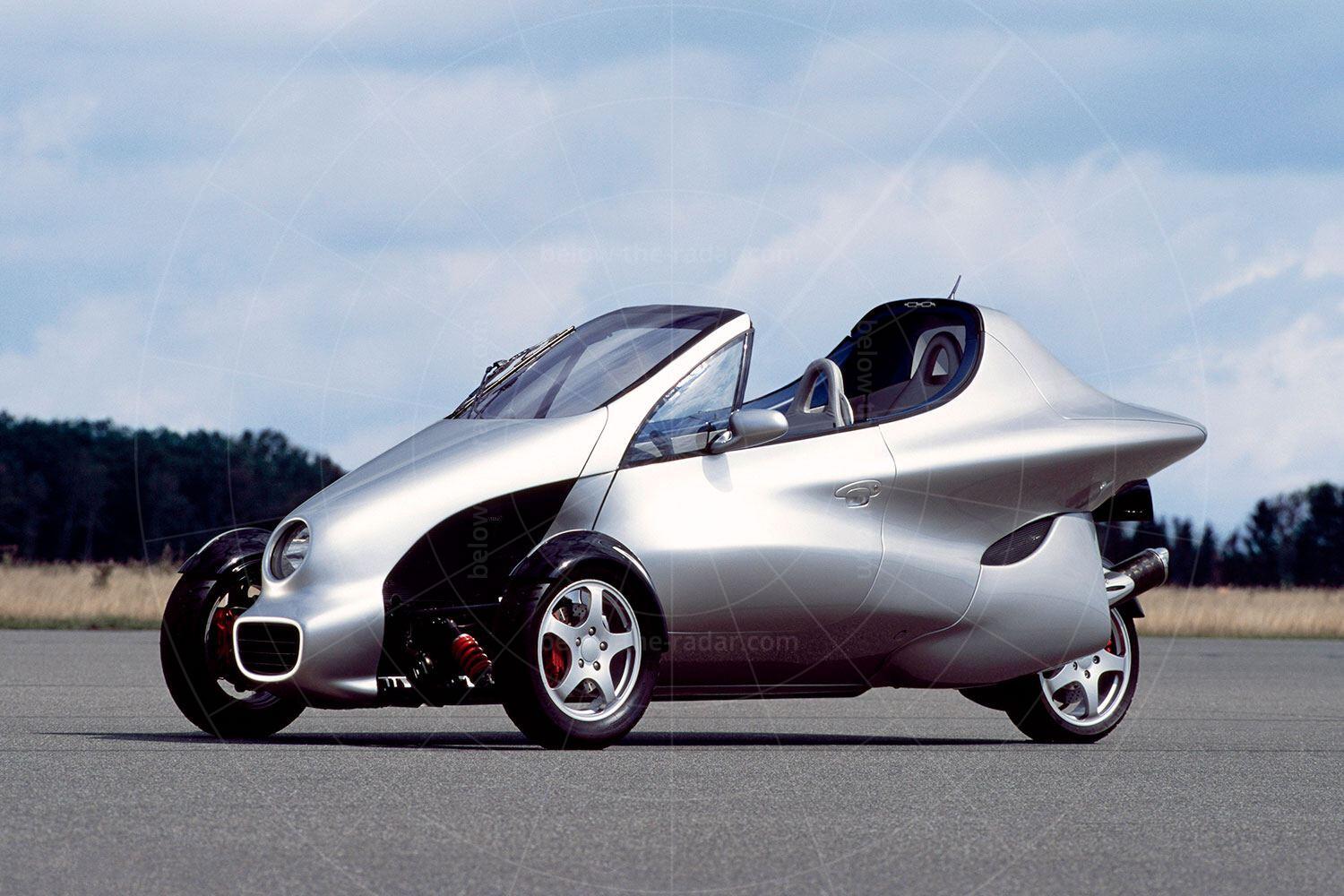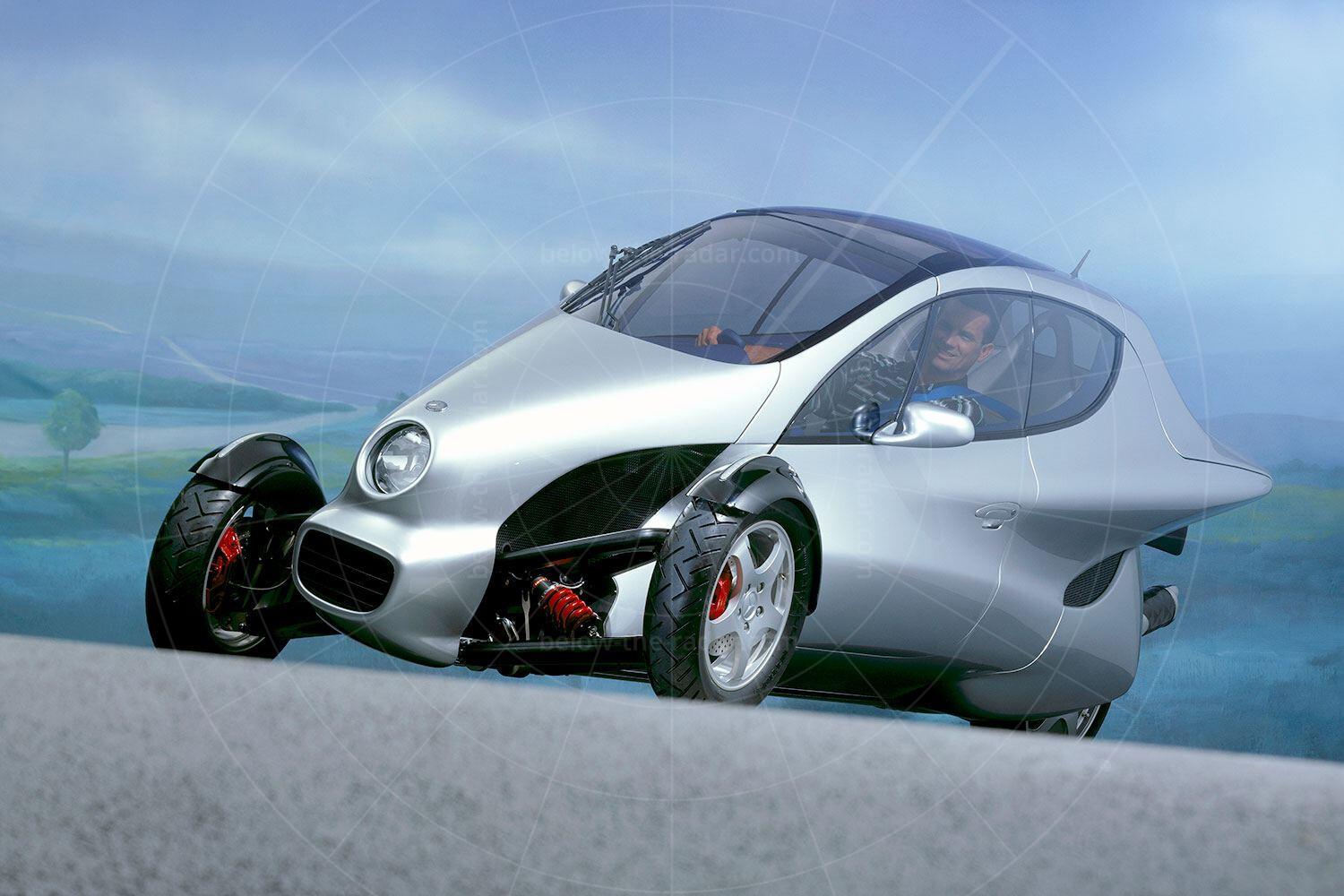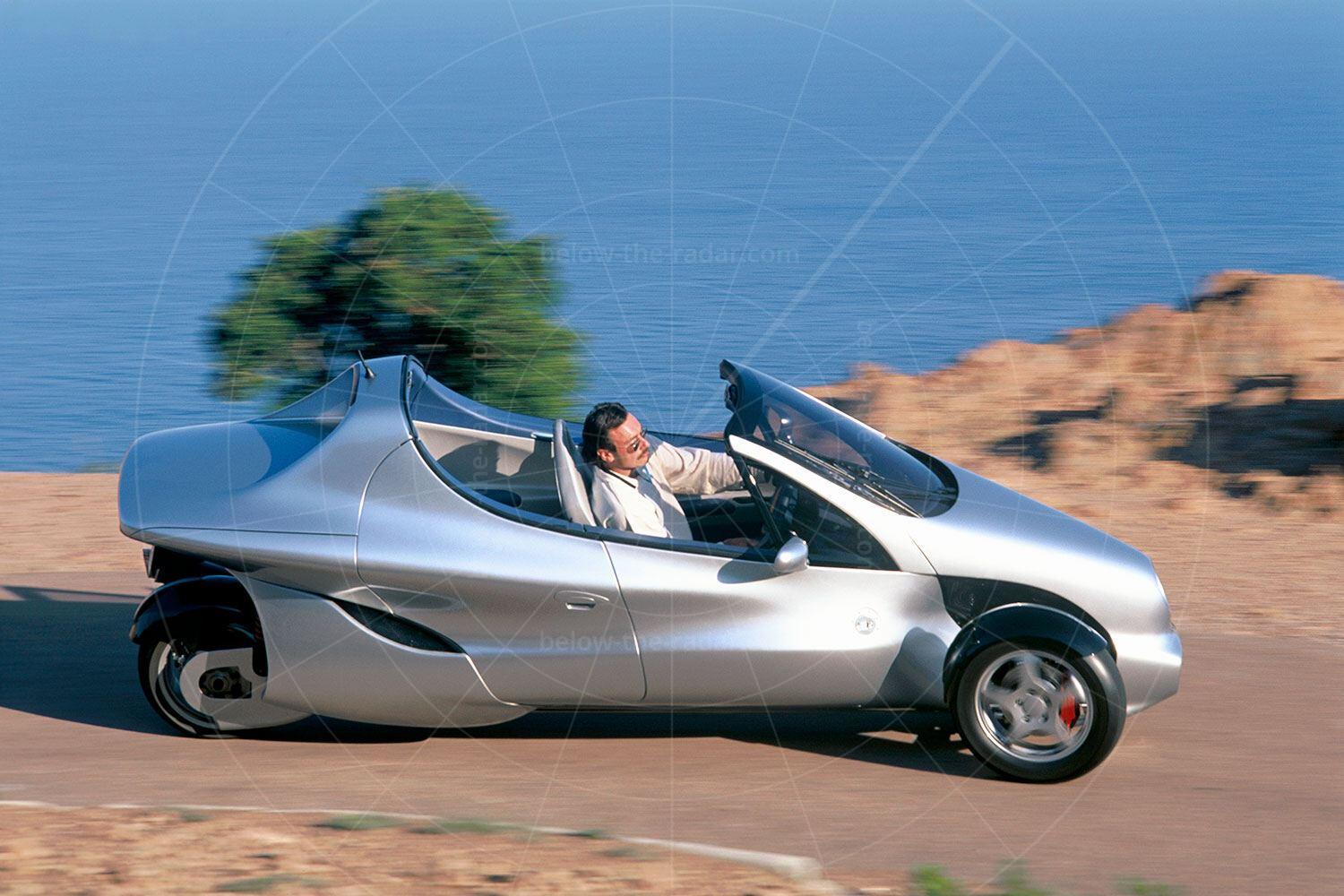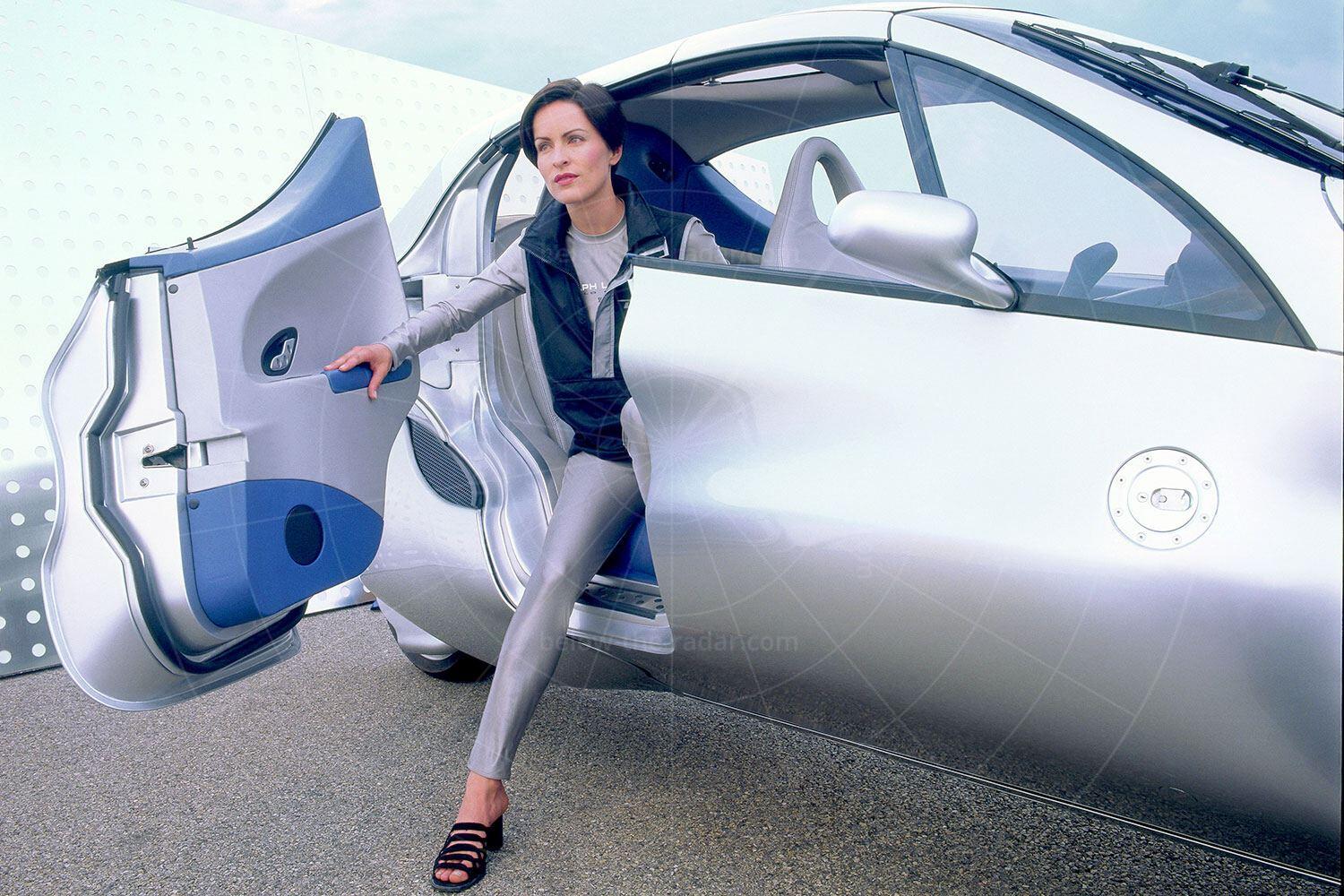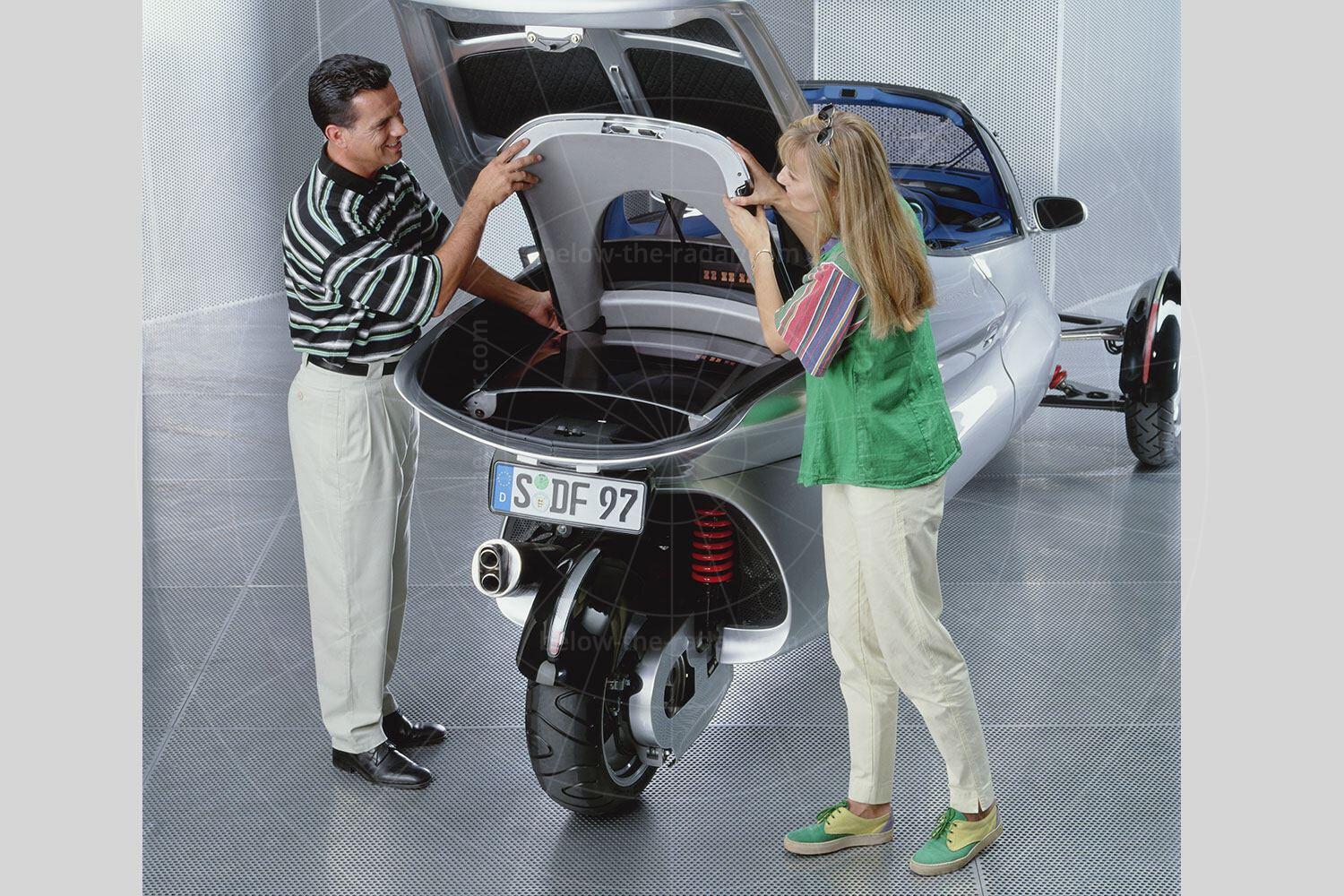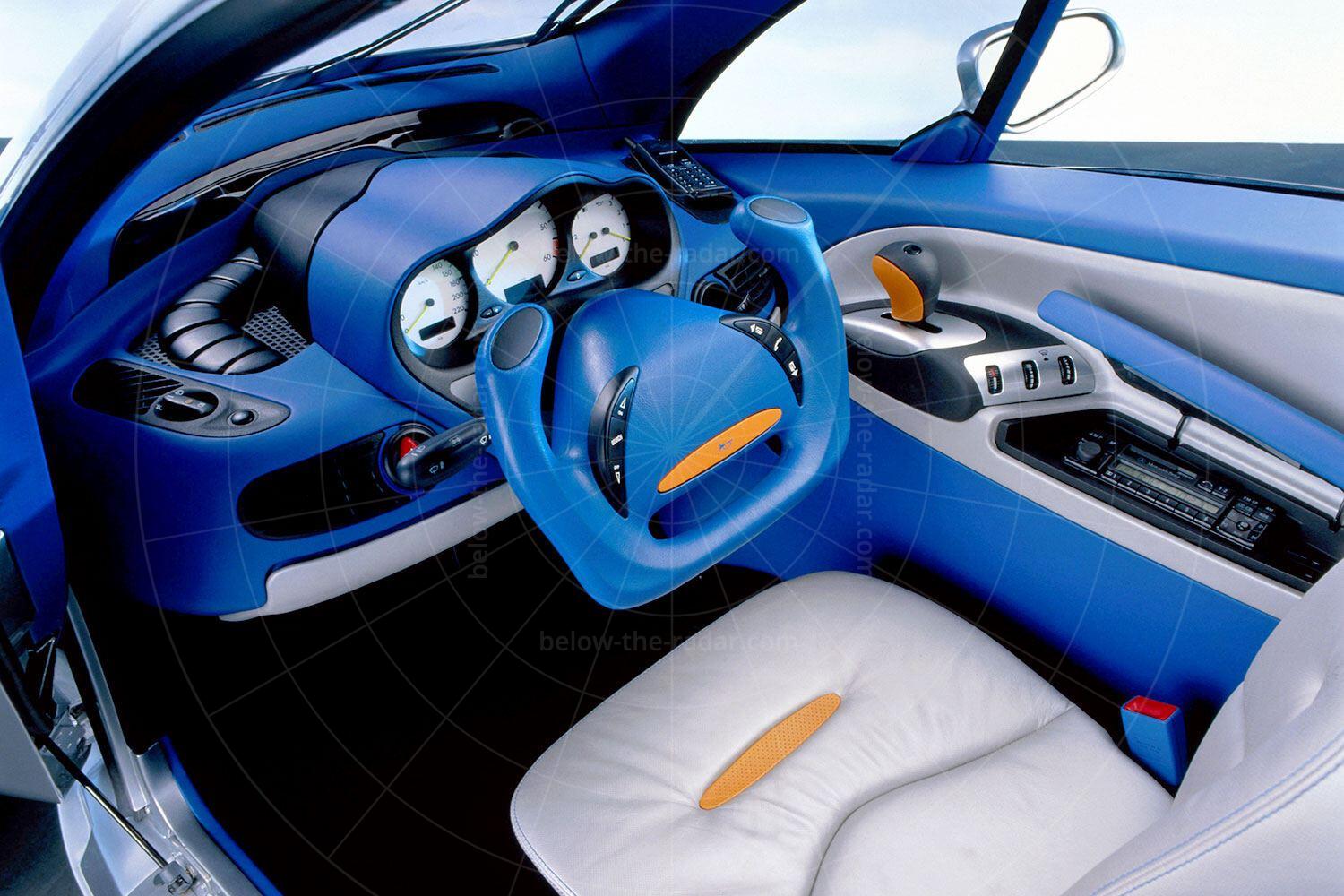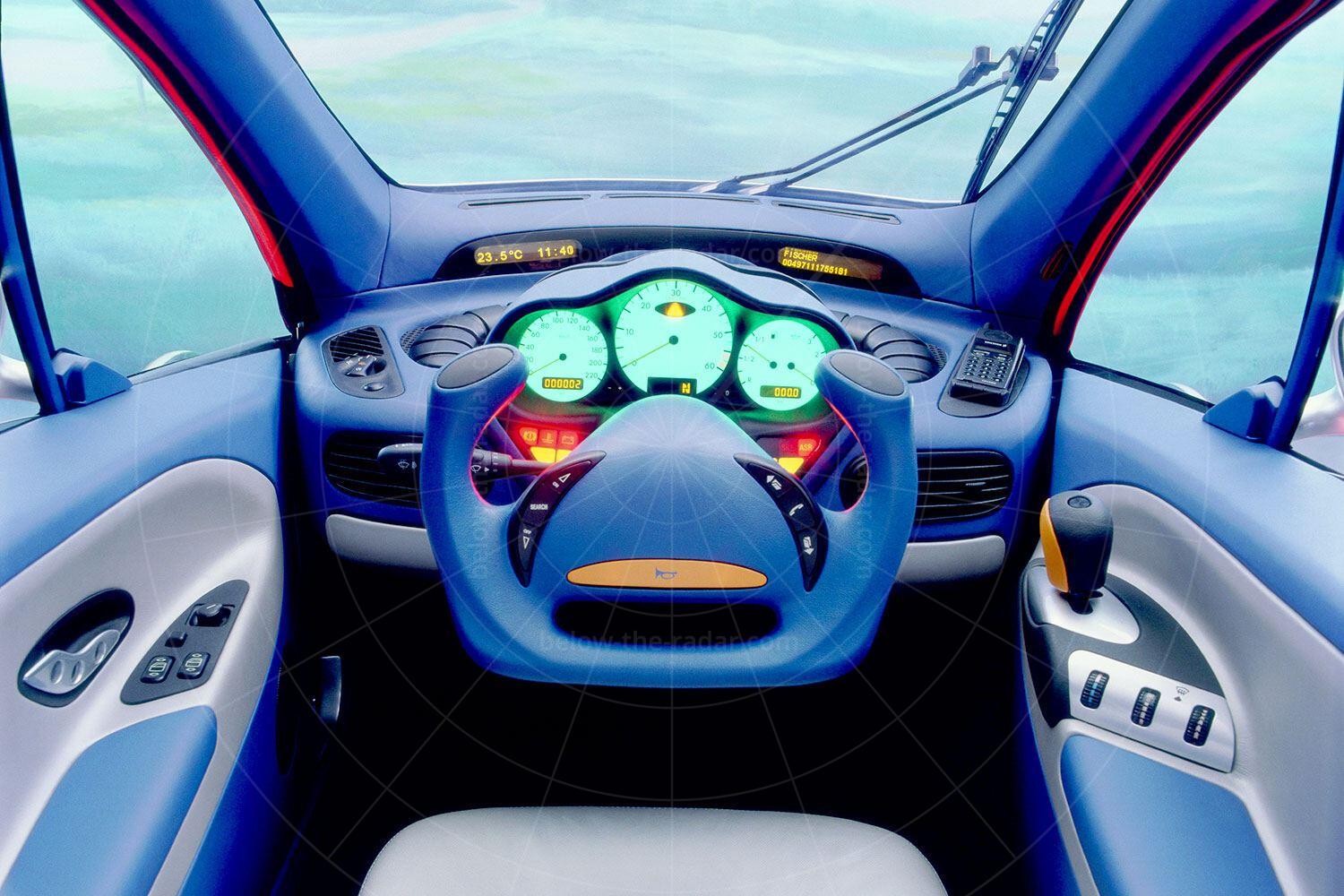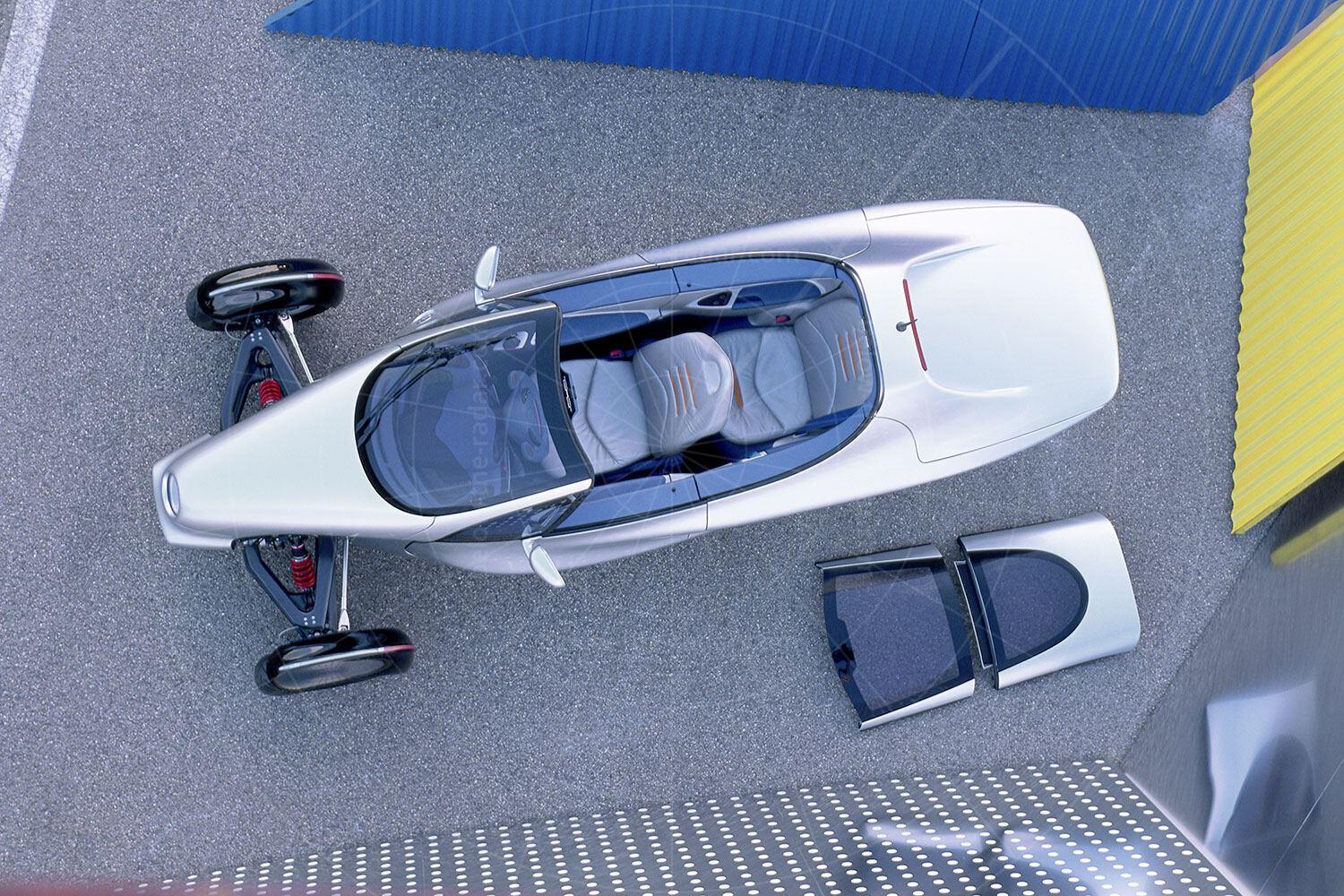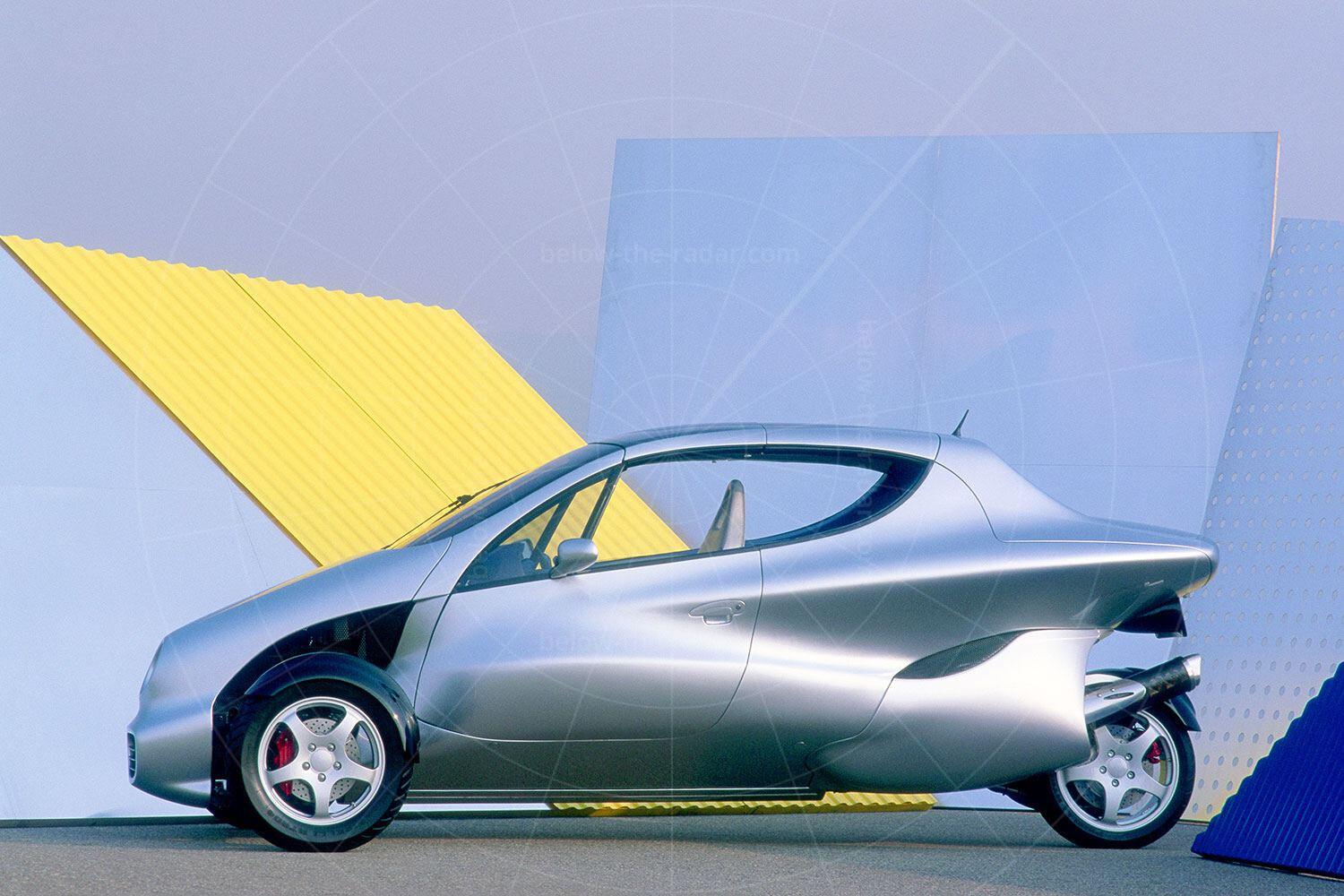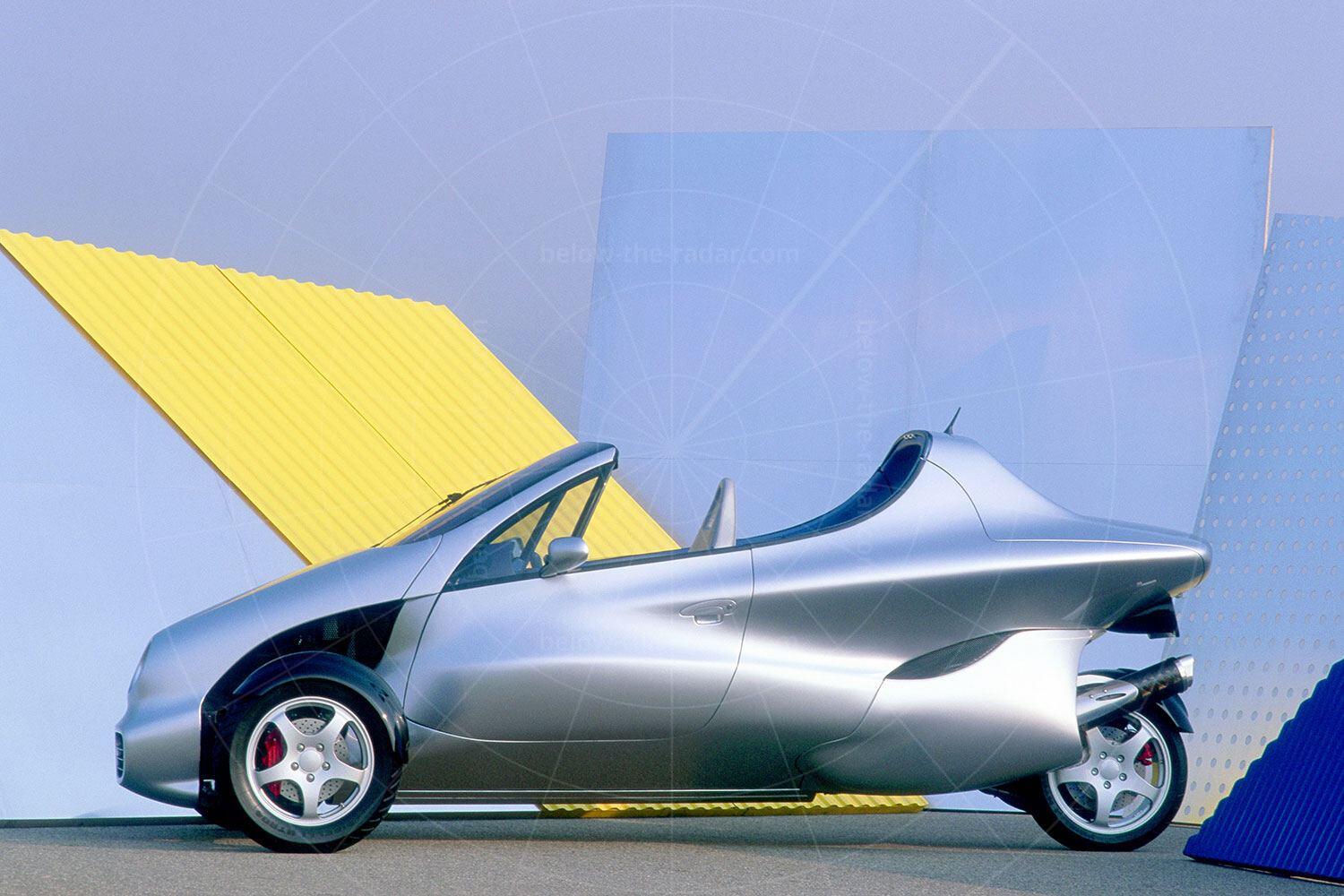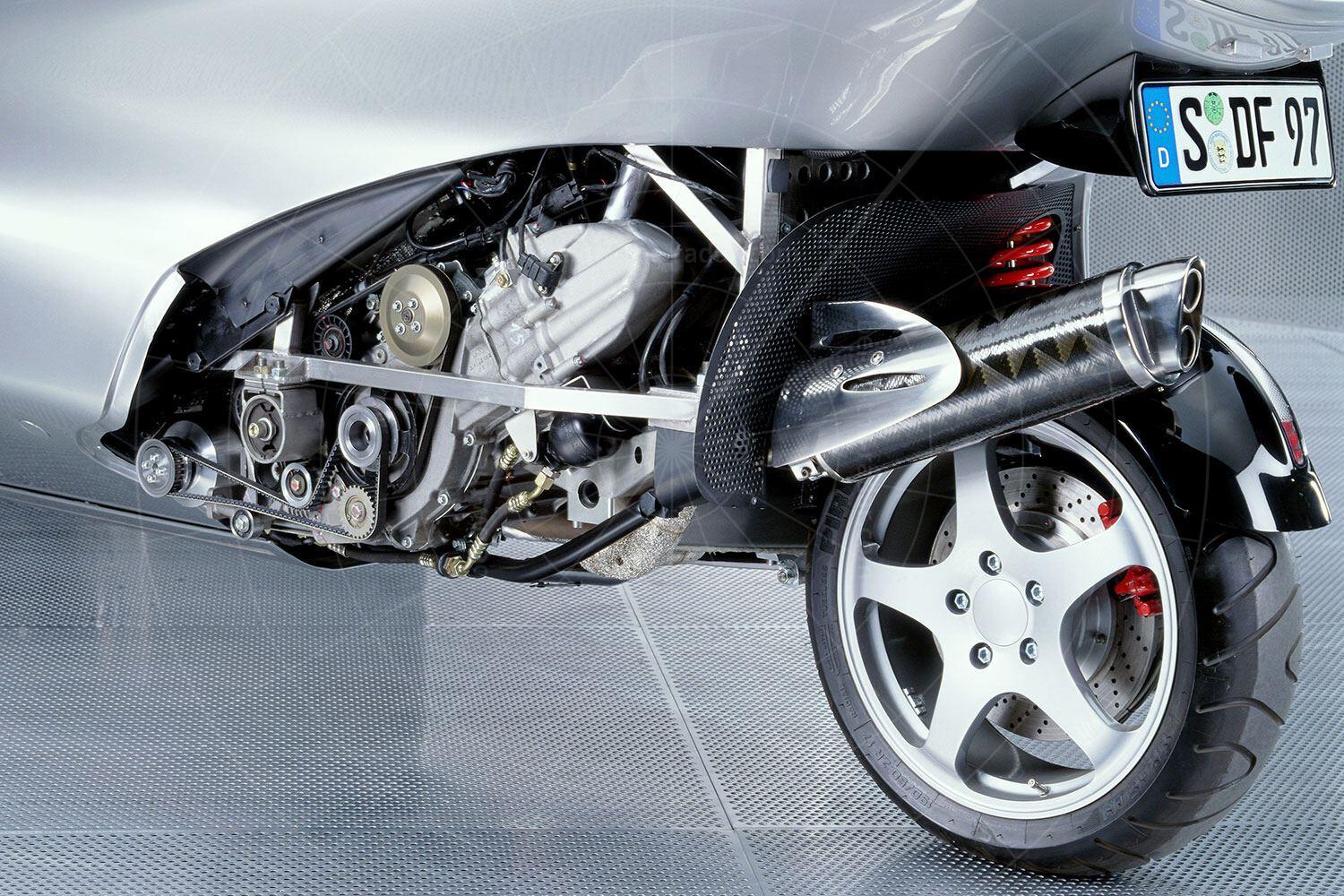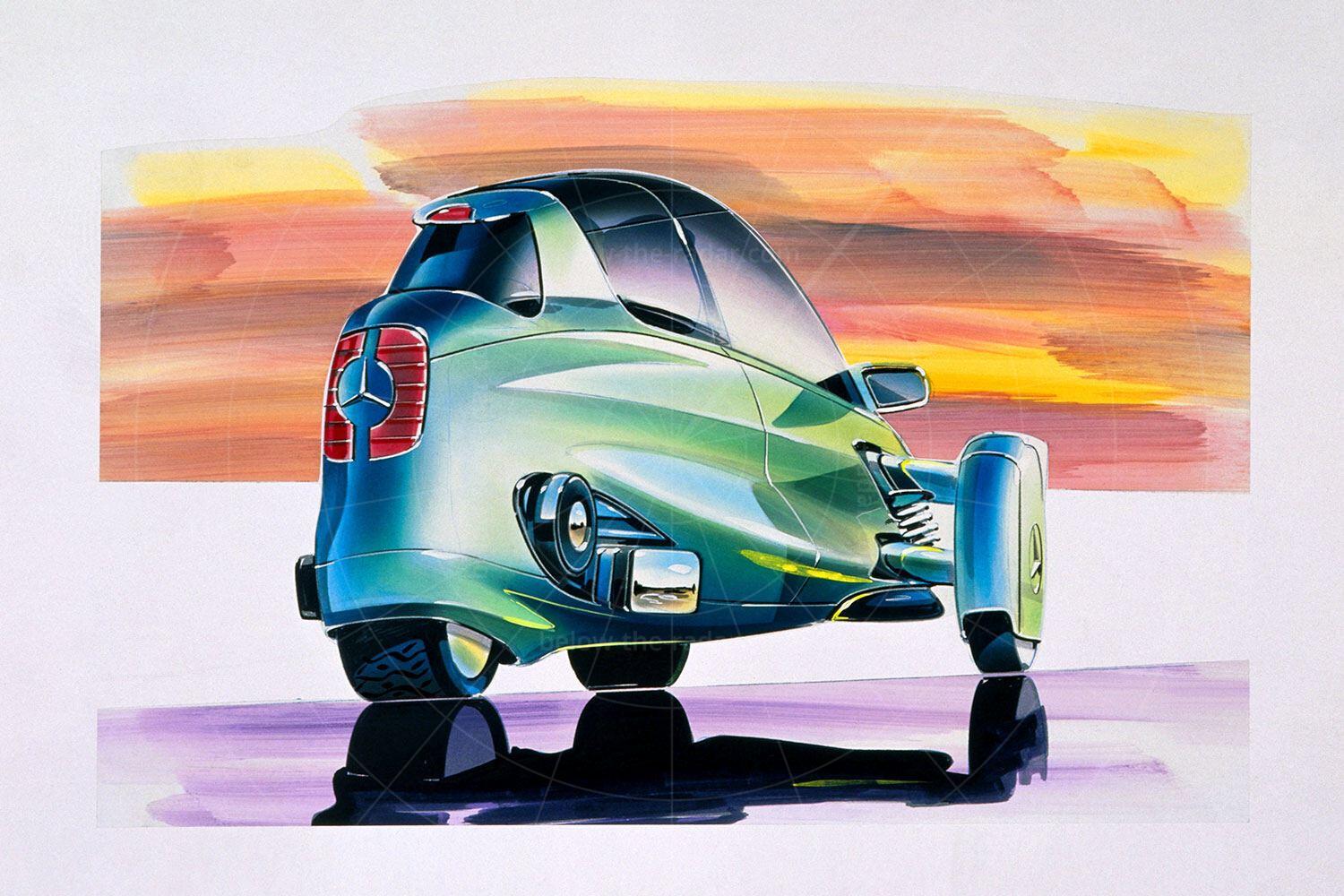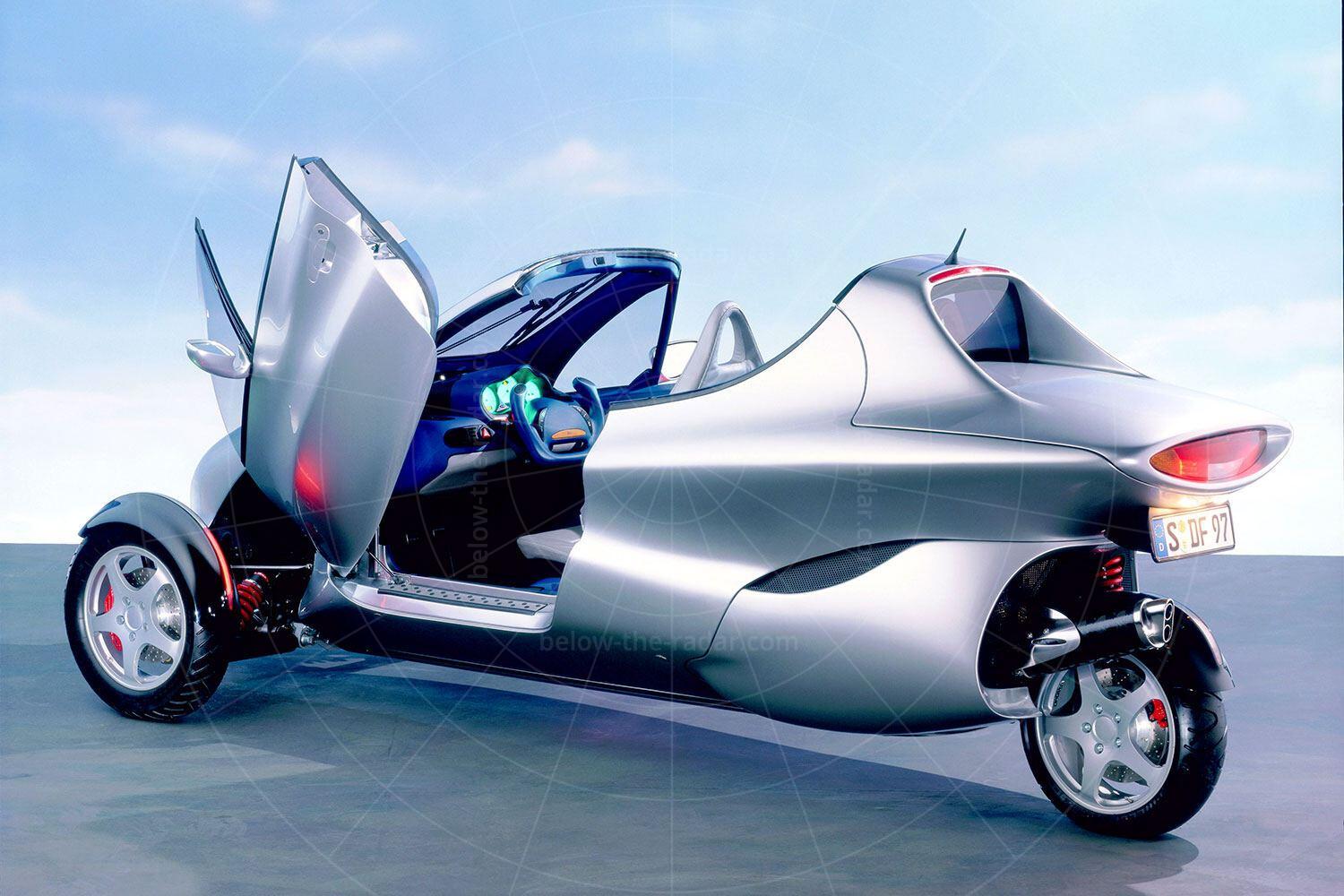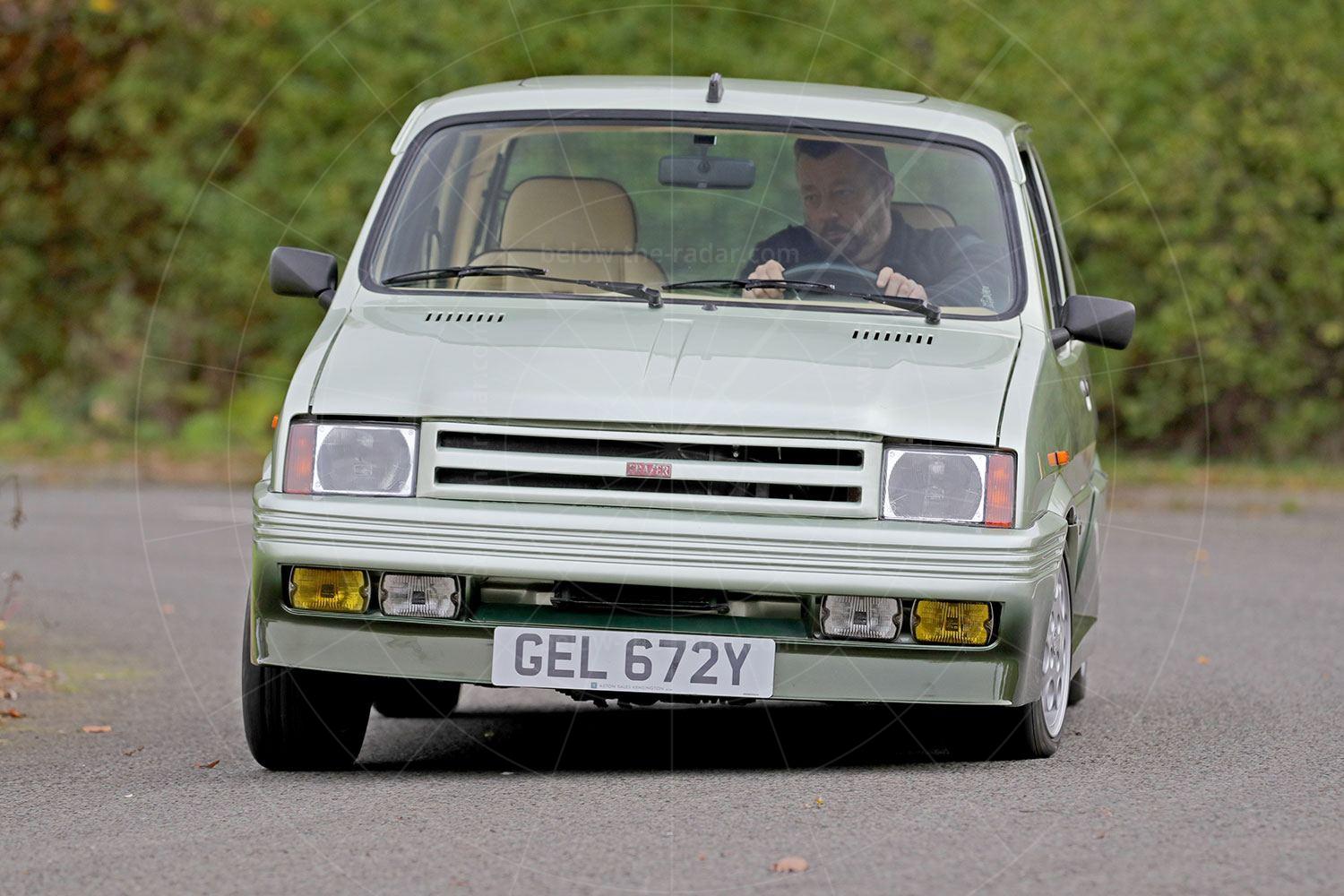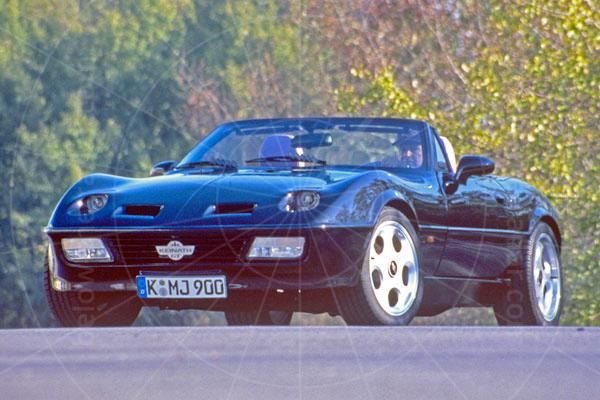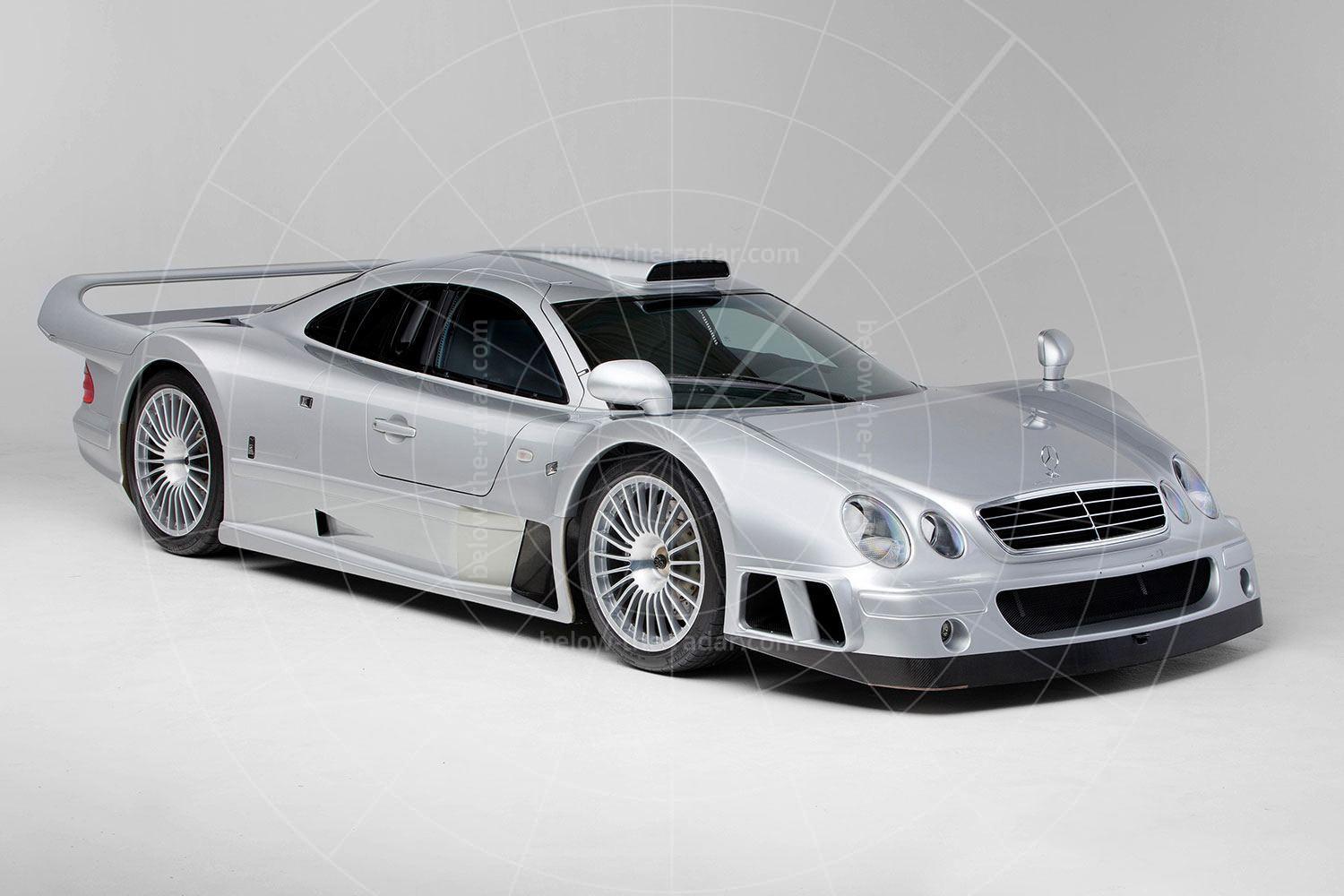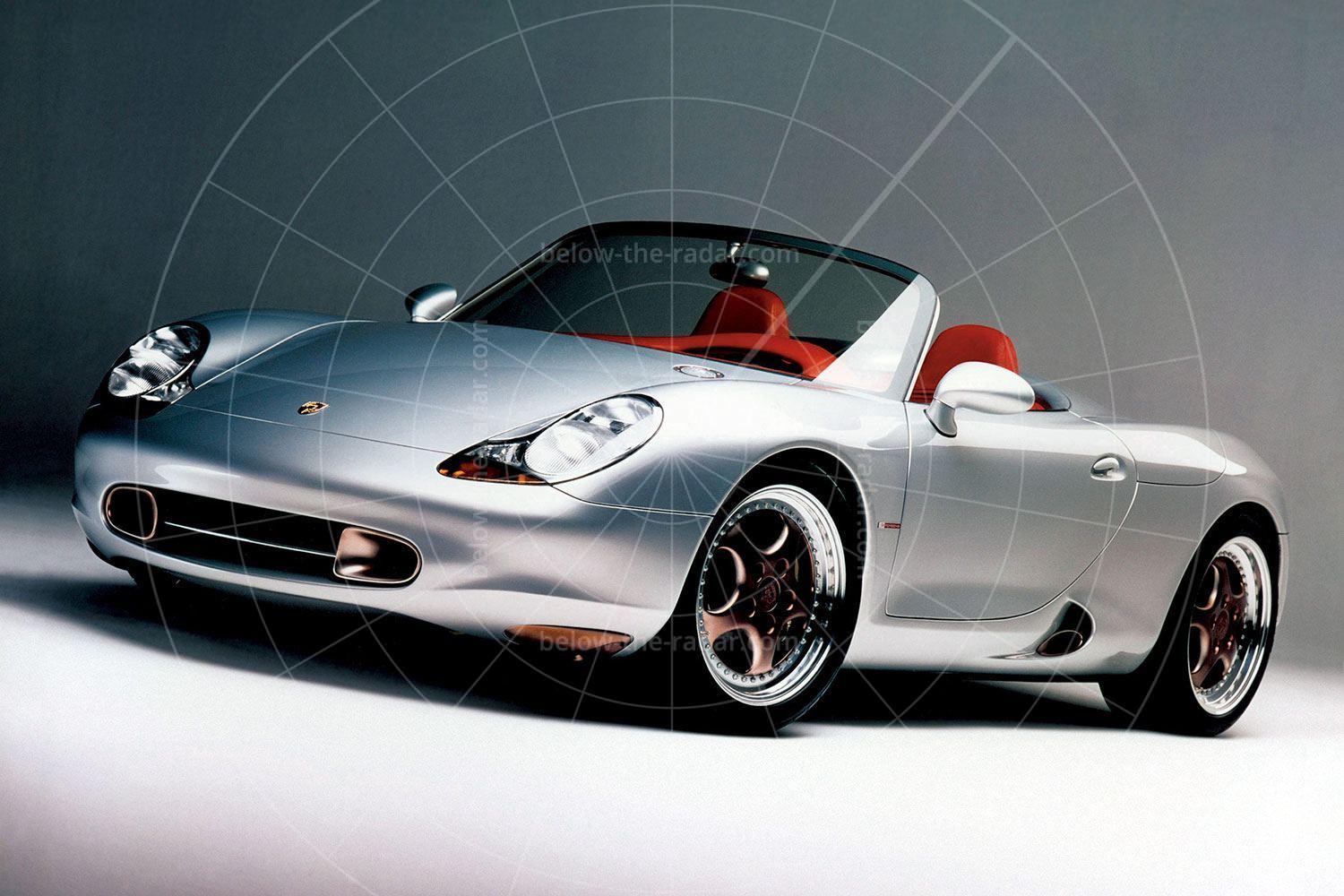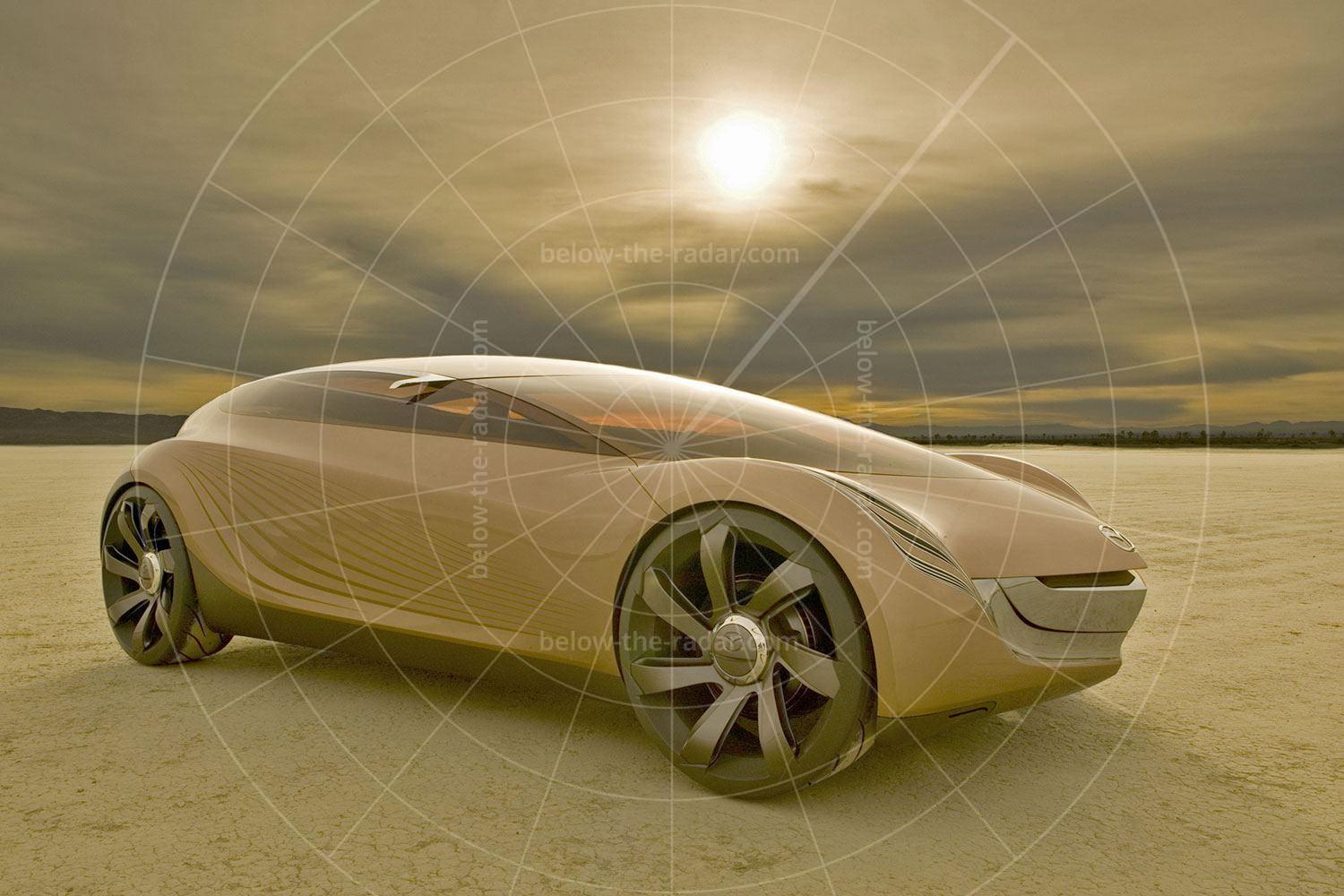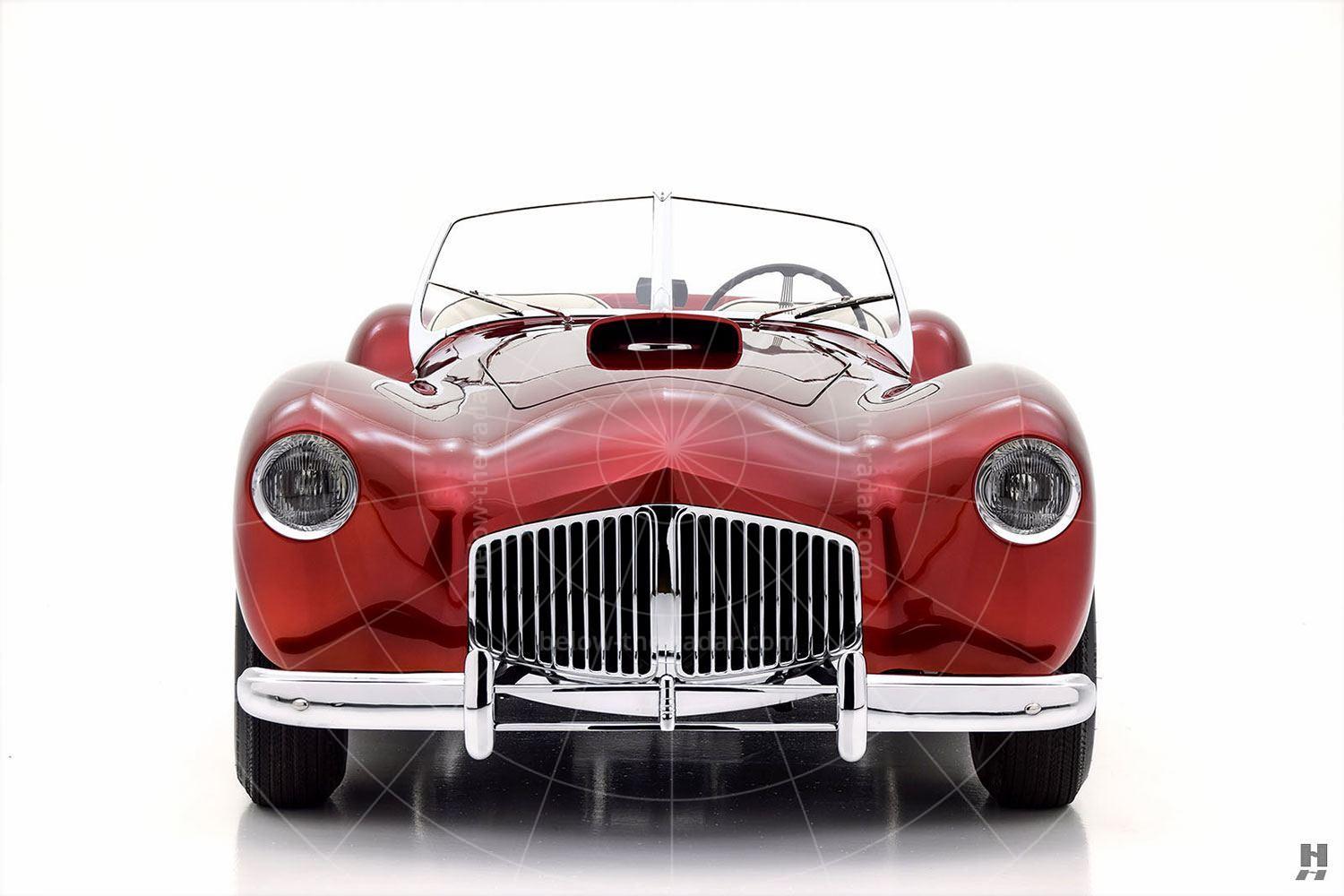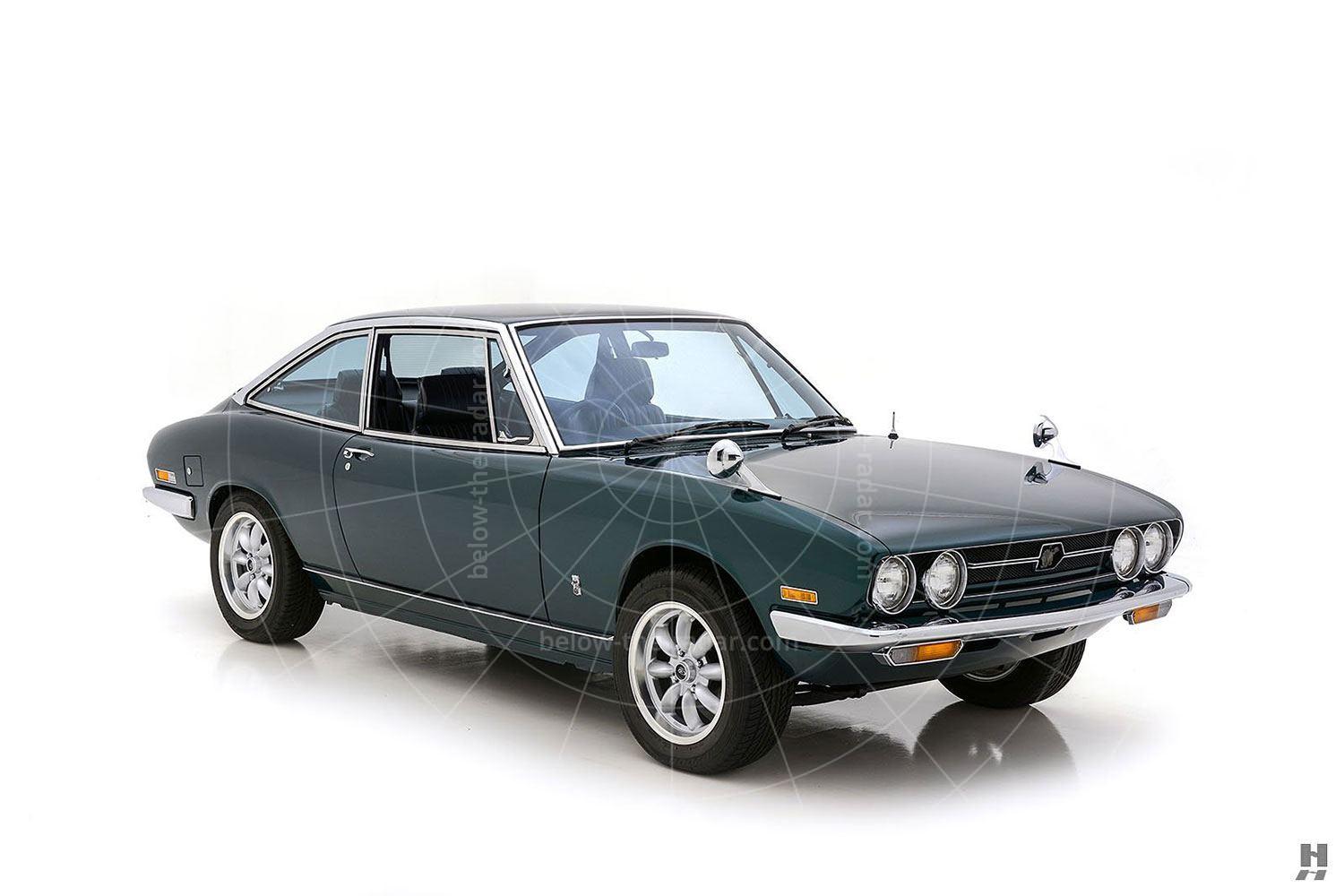When Mercedes launched its F300 Life-Jet at the 1997 Frankfurt motor show, everybody laughed. There was no way anybody would ever build a car like this one, because it was just too wacky. Looking like a cross between a motorbike and a car, the three-wheeled contraption featured a narrow body which leaned as the car turned a corner. But fast forward to 2003 and just such a car did make production: a Dutch vehicle called the Vandenbrink Carver (later the Carver One).
Such a concept was unusually light-hearted for a company as serious as Mercedes, which was usually renowned for testing ideas that would make cars safer, more comfortable or more economical. But the F300 Life-Jet wasn’t about any of those things. Instead it was about having fun in a way that you couldn’t in anything else.
Although the F300 Life-Jet was just a two-seater with a narrow bodyshell that featured two seats set in tandem, it was actually quite a large car. The F300 Life-Jet was bigger than an A-class, whose 1.6-litre engine and transmission it borrowed. But with a weight of 800kg – which was pretty heavy for what it was – the F300 Life-Jet could easily beat the A-class when it came to performance. It could sprint from a standing start to 62mph in less then eight seconds and was capable of more than 130mph. Perhaps not as fast as a motorbike, but definitely safer.
To keep with the motorbike theme, the F300 Life-Jet was fitted with a body which was normally open to the elements. But for those inclement moments there was always the option of a fitted hard top, which was a less neat solution than a well-engineered folding roof.
Whereas it looked as though the interior should feature a motorbike-style twist grip (although there was a sort of steering wheel rather than handlebars), the controls to drive the F300 Life-Jet were the same as any conventional car. The transmission was a five-speed sequential manual that allowed ultra-fast gearchanges and did away with the need for a manually operated clutch – such transmissions were just starting to become commonplace as the F300 Life-Jet was being shown.
Something that was unlikely to make it into production, even if the car had got that far, was the single headlamp. To make it as effective as a conventional twin-headlamp system there were three reflector zones and two bulbs, and in case this wasn’t enough, there was an extra lamp built in which would illuminate if the car was leaning heavily into a corner.
It was this tilt mechanism above everything else which allowed the F300 Life-Jet to defy convention the most comprehensively. Whereas a motorcycle rider would be used to leaning into a bend, the F300’s electronics and hydraulics allowed it to lean out of the bend. Anyone who drove it agreed that such a situation was bizarre in the extreme, and it also made it very difficult to judge when limits of adhesion were being reached, because there was no communication of what the tyres were doing. Everything was kept in check by a system called Active Tilt Control, which consisted of a series of sensors that could detect all of the car’s angles. By then controlling everything by a series of hydraulic rams it was possible to engineer the F300 Life-Jet to react in just about any way imaginable to steering and braking inputs.
To help make the F300 Life-Jet as manouevrable as possible weight was kept to a minimum. The dual-wishbone front axle was made of carbonfibre-reinforced plastic while the chassis was built of aluminium and weighed just 89kg. Such a move ensured fuel consumption was kept to a minimum while performance was optimised. Not that Mercedes would ever have considered even limited production for something as bizarre as the F300 Life-Jet.
| Vital statistics | |
|---|---|
| Debut | Frankfurt 1997 |
| Engine | Rear-mounted, 1598cc, 4-cylinder |
| Transmission | 5-speed sequential manual, rear-wheel drive |
| Power | 102bhp |
| Top speed | 132mph |

